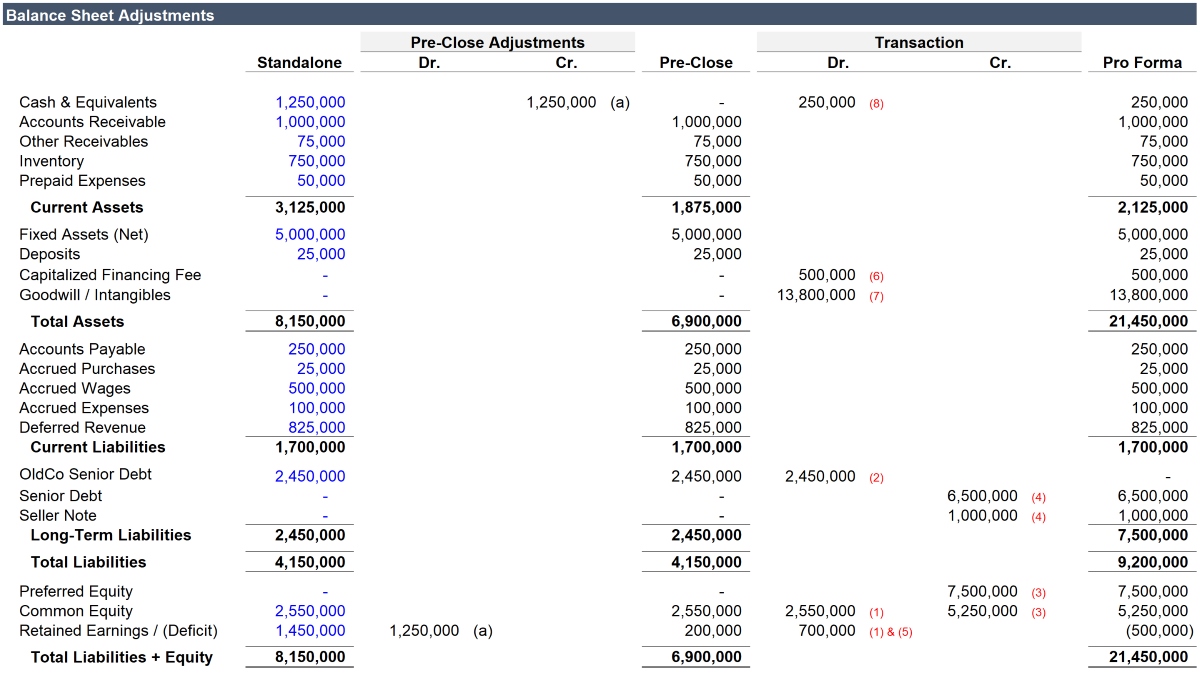

Finance
How Do Investment Banks Make Money?
Published: October 18, 2023
Discover how investment banks generate revenue and make money in the world of finance. Explore their strategies and income streams.
(Many of the links in this article redirect to a specific reviewed product. Your purchase of these products through affiliate links helps to generate commission for LiveWell, at no extra cost. Learn more)
Table of Contents
Introduction:
Investment banks play a crucial role in the financial industry, serving as intermediaries between corporations and investors. With their specialized knowledge and expertise, investment banks provide a range of financial services to clients, including raising capital, advising on mergers and acquisitions, and facilitating trading in the financial markets. But have you ever wondered how these banks make money?
In this article, we will dive into the intricate world of investment banking and explore the various ways in which these institutions generate revenue. From fee-based services to trading and underwriting, investment banks employ a diverse range of strategies to ensure profitability.
Understanding how investment banks make money is not only important for aspiring finance professionals but also for investors and clients who rely on these institutions for financial advice and services. By gaining insight into the revenue streams of investment banks, individuals can make more informed decisions and better evaluate the value provided by these institutions.
So, let’s embark on a journey into the inner workings of investment banks and uncover the secrets behind their money-making strategies.
Investment Banking Overview:
Investment banking is a specialized segment of the financial industry that focuses on providing a range of financial services to corporations, governments, and high-net-worth individuals. Unlike traditional commercial banks, which primarily deal with deposits and loans, investment banks operate in the capital markets, facilitating the buying and selling of securities and offering strategic advice to clients.
The role of investment banks goes beyond just facilitating transactions. They act as intermediaries, connecting buyers and sellers in the financial markets and providing valuable insights and expertise to clients. Investment banks play a crucial role in capital formation, helping businesses raise funds through various channels, such as initial public offerings (IPOs), bond issuances, and private placements.
In addition to capital raising, investment banks offer a range of advisory services, including mergers and acquisitions (M&A), restructuring, and strategic planning. These services are aimed at helping clients navigate complex financial transactions and maximize their value.
Moreover, investment banks engage in trading activities, buying and selling securities on behalf of their clients or for their proprietary trading desks. They provide liquidity to the markets and take positions in various financial instruments, such as stocks, bonds, derivatives, and commodities.
Overall, investment banks are multifaceted institutions that combine financial expertise, market knowledge, and relationships with clients to provide comprehensive financial services. Their core functions include capital raising, trading and sales, advisory services, and risk management.
In the next sections, we will delve deeper into the specific revenue streams that investment banks rely on to sustain their operations and generate profits. By understanding how investment banks make money, we can gain a holistic perspective on their business models and the value they bring to the financial industry.
Services Provided by Investment Banks:
Investment banks offer a wide range of financial services to their clients. These services can be broadly categorized into three main areas: capital markets, advisory, and trading. Let’s explore each of these areas in more detail.
1. Capital Markets:
Investment banks are instrumental in facilitating capital formation for corporations and governments. They help clients raise funds through various channels, such as initial public offerings (IPOs), where a private company goes public and issues shares to the public for the first time. Investment banks also assist with bond issuances, where companies or governments borrow money by selling bonds to investors. Furthermore, investment banks facilitate private placements, where companies raise capital by selling shares or other securities to a select group of investors.
2. Advisory Services:
Investment banks provide expert advice and guidance to clients on a wide range of financial matters. One of the key advisory services offered by investment banks is mergers and acquisitions (M&A) advisory. They assist clients in evaluating potential acquisition targets or merger opportunities and provide strategic advice throughout the deal-making process. Investment banks also specialize in restructuring and reorganizing businesses, helping distressed companies navigate financial challenges and optimize their operations. Additionally, they offer strategic consulting to clients, assisting with financial planning, business expansion, and risk management.
3. Trading and Sales:
Investment banks engage in trading activities, buying and selling securities on behalf of clients or for their proprietary trading desks. They act as intermediaries between buyers and sellers in the financial markets, providing liquidity and ensuring smooth transactions. Investment banks trade a wide range of financial instruments, including stocks, bonds, derivatives, and commodities. They also offer brokerage services to institutional clients and individual investors, executing trades and providing market insights and research.
It is important to note that the extent and scope of services offered by investment banks may vary depending on the size and capabilities of the institution. Some investment banks may specialize in certain areas, such as mergers and acquisitions or securities trading, while others may offer a more comprehensive suite of services.
Understanding the range of services provided by investment banks is essential for clients and investors looking to leverage their expertise and navigate the complex financial landscape. By utilizing the services of investment banks, businesses can access capital, seek strategic guidance, and optimize their financial strategies for long-term success.
How Investment Banks Generate Revenue:
Investment banks employ various strategies to generate revenue and maintain profitability. These revenue streams can be divided into three primary categories: fee-based services, trading and sales, and underwriting and advisory income.
1. Fee-Based Services:
One of the main sources of revenue for investment banks is through fees charged for their services. Investment banks provide a wide range of fee-based services, such as underwriting, mergers and acquisitions advisory, debt and equity issuance, and strategic consulting. The fees are typically calculated as a percentage of the transaction value or as a fixed fee for services rendered. These fees are generated through successful completion of transactions and are a crucial component of investment banks’ revenue streams.
2. Trading and Sales Revenue:
Investment banks engage in trading activities on behalf of clients or for their proprietary trading desks. They buy and sell financial instruments such as stocks, bonds, derivatives, and commodities, earning revenue from the price difference between buying and selling these assets. Investment banks also earn revenue through brokerage services, charging commissions for executing trades on behalf of institutional clients and individual investors. Trading and sales revenue can fluctuate depending on market conditions and the performance of the investment banks’ trading activities.
3. Underwriting and Advisory Income:
Another significant revenue stream for investment banks is generated through underwriting and advisory services. When companies or governments issue securities such as stocks or bonds to raise capital, investment banks act as underwriters. They purchase these securities from the issuer at a lower price and then sell them to investors at a higher price, earning the difference between the two as underwriting income. Investment banks also earn income through advisory services, where they provide strategic advice, analysis, and guidance on mergers and acquisitions, restructuring, and other financial transactions.
Overall, investment banks rely on a combination of fee-based services, trading and sales revenue, and underwriting and advisory income to generate revenue. By diversifying their revenue streams, investment banks can mitigate risks and adapt to changing market conditions. Additionally, investment banks may also earn income through interest on loans, asset management fees, and other ancillary services.
It’s important to note that the revenue generated by investment banks can vary significantly depending on market conditions, economic cycles, and the success of their advisory and trading activities. Investment banks must carefully manage risks and adapt to evolving industry trends to ensure consistent revenue generation and long-term profitability.
Primary Sources of Revenue for Investment Banks:
Investment banks rely on several key sources of revenue to sustain their operations and generate profits. These revenue streams are essential for maintaining the viability and competitiveness of investment bank institutions. While the specific revenue composition may vary among different banks, there are three primary sources of revenue for investment banks: fee-based services, trading and sales, and underwriting and advisory income.
1. Fee-Based Services:
Fee-based services make up a significant portion of the revenue for investment banks. These services include underwriting, mergers and acquisitions advisory, debt and equity issuance, and strategic consulting. Investment banks charge fees for these services based on the transaction value or as fixed fees for providing expertise and guidance. Underwriting fees are earned when investment banks participate in the issuance of stocks or bonds, where they purchase the securities from the issuer at a lower price and sell them to investors at a higher price. Mergers and acquisitions advisory fees are based on a percentage of the transaction value, typically a significant portion. Overall, fee-based services play a crucial role in generating consistent revenue for investment banks.
2. Trading and Sales Revenue:
Investment banks engage in trading activities on behalf of clients or for their own proprietary trading desks. Trading revenue is generated through buying and selling financial instruments such as stocks, bonds, derivatives, and commodities, aiming to profit from short-term price fluctuations. Investment banks also earn revenue through sales, acting as intermediaries between buyers and sellers in the financial markets. As market makers, investment banks provide liquidity and facilitate trading activities, earning commissions or spreads on executed trades. While trading and sales revenue can be volatile and subject to market conditions, it can also be highly lucrative during favorable market periods.
3. Underwriting and Advisory Income:
Underwriting and advisory income is another significant source of revenue for investment banks. Investment banks play a crucial role in facilitating the issuance of new securities, including stocks and bonds, by acting as underwriters. Underwriters purchase these securities from the issuer at a lower price and then sell them to investors at a higher price, earning the difference as underwriting income. Investment banks also earn income through advisory services, where they provide strategic advice, analysis, and guidance on various financial transactions, including mergers and acquisitions, restructuring, and capital raising efforts.
While fee-based services, trading and sales revenue, and underwriting and advisory income are the primary sources of revenue for investment banks, it’s important to note that other auxiliary revenue streams can contribute to the overall financial health of the institution. These may include income from interest on loans, asset management fees, research services, and other ancillary business activities.
Investment banks strive to maintain a balance among their revenue sources, aiming to diversify risk and adapt to changing market conditions. A well-balanced revenue composition allows investment banks to navigate economic fluctuations and deliver consistent value to clients, shareholders, and stakeholders.
Fee-Based Revenue Streams:
Fee-based revenue streams are a crucial component of an investment bank’s revenue model. These revenue streams are generated through various fee-based services that investment banks offer to their clients. Let’s explore some of the key fee-based revenue streams for investment banks:
1. Underwriting Fees:
Underwriting fees are a significant source of revenue for investment banks. When a company decides to go public through an initial public offering (IPO), investment banks, as underwriters, help the company price and sell its shares to investors. They buy the shares at a lower price from the company and then sell them to the public at a higher price, earning the difference as underwriting fees. The fees are typically calculated as a percentage of the total offering size.
2. Merger and Acquisition (M&A) Advisory Fees:
Investment banks play a crucial role in facilitating mergers and acquisitions, providing advice and guidance throughout the transaction process. M&A advisory fees are earned by investment banks based on the total value of the transaction. The fees are typically structured as a percentage of the deal value and can be substantial, especially for large-scale transactions.
3. Debt and Equity Issuance Fees:
Investment banks assist companies in raising capital through debt and equity issuances. When companies issue bonds or sell shares to raise funds, investment banks act as intermediaries, helping to price and distribute these securities to investors. They earn fees through the issuance process, which are typically calculated as a percentage of the total offering size.
4. Strategic Consulting Fees:
Investment banks offer strategic consulting services to clients, providing valuable insights and guidance on various financial matters. This may include financial planning, risk management, and business expansion strategies. Investment banks earn fees for their consulting services, which are typically structured as fixed fees for the expertise and advice provided.
5. Other Ancillary Fees:
Investment banks may generate additional revenue through various ancillary services. These may include research services, where investment banks provide in-depth market analysis and recommendations to clients for a fee. They may also offer asset management services, where they invest and manage clients’ portfolios, earning management fees based on the assets under management. Furthermore, investment banks may charge fees for providing access to their trading platforms, data services, and technology solutions.
It’s worth noting that fee-based revenue streams can vary in size and composition, depending on market conditions, the scale and complexity of services rendered, and the reputation and expertise of the investment bank. These revenue streams provide stability and predictability to investment banks’ income, as they are not as dependent on market volatility compared to trading and sales revenue.
By diversifying their fee-based revenue streams, investment banks can effectively manage risk and adapt to changing market dynamics. Fee-based services allow investment banks to leverage their expertise, industry knowledge, and networks to provide valuable services to clients and generate sustainable revenue over the long term.
Trading and Sales Revenue:
Trading and sales revenue is a significant source of income for investment banks. These revenue streams are generated through activities related to buying and selling financial instruments, both on behalf of clients and for the bank’s proprietary trading desk. Let’s explore how investment banks generate revenue from trading and sales:
1. Market Making:
Investment banks act as market makers, providing liquidity to the financial markets. They facilitate trading activities by buying and selling securities on demand, allowing investors to find willing counterparties for their trades. Investment banks earn revenue by capturing the difference between the buying and selling prices, known as the spread. Market making activities can involve trading various financial instruments, including stocks, bonds, derivatives, and commodities.
2. Brokerage Services:
Investment banks also earn revenue by providing brokerage services to clients. They execute trades on behalf of institutional clients and individual investors, earning commissions on each executed trade. Investment banks offer expertise, market insights, and research to their clients, assisting them in making informed investment decisions. The commission revenue generated through brokerage services can vary, depending on factors such as the volume of trades and the size of transactions.
3. Proprietary Trading:
Investment banks engage in proprietary trading, where they trade financial instruments using their own capital. This allows them to take positions in the market, aiming to profit from short-term price fluctuations. Proprietary trading desks within investment banks employ traders who utilize sophisticated strategies and analytical tools to identify opportunities and manage risk. Revenue from proprietary trading can be significant, but it can also be volatile, as it is directly influenced by market conditions and the performance of trading strategies.
4. Sales:
Investment banks have dedicated sales teams that work closely with institutional clients, such as asset managers, pension funds, and hedge funds. These teams deliver research, analysis, and market insights to clients, helping them make informed investment decisions. Investment banks earn revenue from sales activities through commissions or mark-ups on sales transactions. Sales revenue is driven by the ability to develop and maintain strong client relationships and provide valuable market intelligence.
5. Electronic Trading:
In today’s digital age, investment banks have expanded their trading activities to include electronic trading platforms. These platforms enable institutional clients and individual investors to trade financial instruments electronically, removing the need for traditional voice-based transactions. Investment banks earn revenue through electronic trading platforms by charging fees for access to the platform and executing trades.
It’s important to note that trading and sales revenue can be influenced by market volatility, liquidity conditions, and regulatory changes. Investment banks must carefully manage risks associated with trading activities, such as market price fluctuations, counterparty risk, and compliance with trading regulations.
Trading and sales revenue, while potentially lucrative, can also be subject to market cycles and fluctuations. Investment banks continuously adapt their trading strategies and sales efforts to capitalize on market opportunities and mitigate risks, ensuring a sustainable revenue stream and overall profitability.
Underwriting and Advisory Income:
Underwriting and advisory income is a vital source of revenue for investment banks. These income streams are derived from services related to underwriting securities offerings and providing strategic advice to clients. Let’s dive into how investment banks generate revenue through underwriting and advisory activities:
1. Underwriting Income:
Investment banks play a pivotal role in underwriting, which involves assisting companies and governments in issuing securities to raise capital. When a company wants to issue new stocks or bonds, investment banks act as underwriters, purchasing the securities from the issuer and reselling them to investors. The difference between the purchase price and the sale price, known as the underwriting spread, constitutes the underwriting income for investment banks. Underwriting income can be influenced by factors such as the size and complexity of the offering, market conditions, and the bank’s underwriting track record.
2. Advisory Fees:
Another significant source of revenue for investment banks is advisory fees. Investment banks provide strategic advice and guidance to clients on a variety of financial transactions, particularly mergers and acquisitions (M&A), restructuring, and capital raising efforts. Advisory fees are earned based on a percentage of the transaction value, known as the success fee. These fees are often contingent upon the successful completion of the transaction and can be substantial for high-value deals. Investment banks work closely with their clients, providing expertise, industry insights, financial modeling, due diligence, and negotiation support to ensure successful outcomes.
3. Debt and Equity Capital Markets:
Investment banks generate income through debt and equity capital market activities. When companies or governments need to raise funds by issuing debt securities (e.g., bonds), investment banks assist in pricing and structuring these instruments, offering insights into market conditions, and facilitating the issuance process. Investment banks earn fees based on the size and complexity of the debt offering. Similarly, when companies raise funds by issuing equity securities (e.g., stocks), investment banks provide advisory services, underwrite the offering, and earn fees through the underwriting spread.
4. Restructuring and Debt Advisory:
Investment banks also earn income by providing restructuring and debt advisory services. In times of financial distress or business challenges, companies turn to investment banks for guidance on debt restructuring, refinancing, or recapitalization. Investment banks employ their expertise to develop strategic plans, negotiate with creditors, and assist companies in enhancing their financial position. Fees for restructuring and debt advisory services can vary depending on the scope and complexity of the engagement.
5. Capital Structure and Financing Advice:
Investment banks provide advice to clients on optimizing their capital structure and financing strategies. They analyze clients’ financials, industry dynamics, and market conditions to determine the most suitable financing options, such as debt, equity, or hybrid instruments. Investment banks earn fees for their advice and expertise in helping clients make informed decisions and access the most cost-effective sources of capital.
Underwriting and advisory income rely on the investment banks’ capabilities, reputation, and track record in executing successful transactions and providing valuable strategic guidance. These income streams create long-term relationships with clients and contribute to the overall profitability of investment banks.
Investment banks navigate complex financial landscapes, employing their expertise, market knowledge, and networks to provide underwriting services and strategic advice to clients. By charging appropriate fees for these services, investment banks generate revenue and play a vital role in shaping the financial landscape for corporations, governments, and investors.
Investment Banking Business Model:
The investment banking business model encompasses a range of activities and strategies aimed at generating revenue and driving profitability. Let’s explore the key aspects of the investment banking business model:
1. Client Relationships:
Investment banks prioritize building and maintaining strong relationships with their clients. These relationships are essential for securing business opportunities and generating revenue. Investment bankers work closely with corporate clients, governments, institutional investors, and high-net-worth individuals, providing financial advice, structuring transactions, offering capital raising solutions, and executing trades. Cultivating long-term relationships allows investment banks to understand client needs, anticipate market trends, and deliver tailored solutions, fostering trust and loyalty.
2. Expertise and Market Knowledge:
Investment banks rely on their specialized expertise and in-depth market knowledge to provide value-added services to clients. Investment bankers possess deep industry knowledge, financial modeling skills, and transactional experience that enable them to advise clients on complex financial matters. Whether it is providing M&A advice, underwriting securities offerings, or executing trades, investment banks leverage their expertise and insights to deliver solutions that meet client objectives.
3. Diversification of Revenue Streams:
Investment banks strive to diversify their revenue streams to mitigate risks and capture opportunities across different market conditions. They maintain a balanced mix of fee-based services, trading and sales activities, and underwriting income. By diversifying revenue streams, investment banks can generate stable income from fee-based services, potentially high returns from trading and sales activities, and substantial income from underwriting and advisory services. This diversification helps investment banks adapt to changing market dynamics and maintain profitability in volatile market environments.
4. Global Presence and Network:
Investment banks have a global presence, with offices in major financial centers around the world. They utilize their extensive network to connect clients with opportunities and facilitate cross-border transactions. A global presence allows investment banks to leverage local market expertise, access a wider client base, and navigate regulatory frameworks. The network also enables investment banks to distribute securities offerings to a diverse set of investors, ensuring broad coverage and maximizing transaction potential.
5. Risk Management:
Effective risk management is a critical component of the investment banking business model. Investment banks employ risk management frameworks and methodologies to identify, measure, and mitigate various risks associated with their activities. These risks include market risk, credit risk, operational risk, and legal and regulatory risk. By managing and mitigating risks, investment banks protect their own financial stability, maintain client trust, and safeguard their reputation.
6. Innovation and Technology:
Investment banks embrace innovation and technology to enhance efficiency and deliver value-added services to clients. They invest in state-of-the-art trading platforms, data analytics, and risk management systems to optimize operations and enhance decision-making processes. Investment banks also leverage digital platforms and tools to improve client experience, such as electronic trading platforms, research portals, and online investment banking services.
The investment banking business model revolves around establishing strong client relationships, leveraging expertise and market knowledge, diversifying revenue streams, maintaining a global presence, managing risks, and embracing innovation. By effectively executing their business model, investment banks aim to deliver value to clients, generate sustainable revenue, and maintain their position as trusted financial intermediaries in the global financial ecosystem.
Conclusion:
Investment banks play a crucial role in the financial industry, providing a wide range of financial services to clients. Throughout this article, we have explored how investment banks generate revenue and sustain profitability through fee-based services, trading and sales, and underwriting and advisory activities.
Fee-based services, such as underwriting, mergers and acquisitions advisory, and strategic consulting, offer a stable and consistent source of revenue for investment banks. These services rely on the expertise and market knowledge of investment bankers, allowing them to deliver tailored solutions to clients and earn fees based on the value they provide.
Trading and sales revenue, on the other hand, fluctuates with market conditions and the performance of investment banks’ trading activities. Market making, brokerage services, proprietary trading, and sales activities contribute to the trading and sales revenue stream, allowing investment banks to capture opportunities and provide liquidity to the financial markets.
Underwriting and advisory income is another significant source of revenue for investment banks. Acting as underwriters, investment banks earn income through the issuance of stocks and bonds. By providing strategic advice and guidance on mergers and acquisitions, restructuring, and capital raising efforts, investment banks earn advisory fees based on successful transactions.
The investment banking business model thrives on strong client relationships, expertise, market knowledge, revenue stream diversification, global presence, risk management, and innovation. These elements collectively enable investment banks to provide valuable services to clients, drive revenue growth, and maintain a competitive edge in the financial industry.
It is important to note that the success and profitability of investment banks are closely tied to market conditions, economic cycles, and the ability to adapt to changing regulatory landscapes. Investment banks continuously evolve their strategies, embrace technology, and manage risks to ensure sustainable revenue generation and long-term profitability.
By understanding how investment banks make money and the various revenue streams that support their operations, individuals, businesses, and investors can gain insights into the value and services provided by these institutions. This knowledge empowers clients to make informed decisions and engage with investment banks for their financial needs.
In conclusion, investment banks serve as vital intermediaries in the financial industry, generating revenue through fee-based services, trading and sales activities, and underwriting and advisory income. Their ability to navigate market complexities, deliver value to clients, manage risks, and drive innovation ensures their continued role in shaping the global financial landscape.














